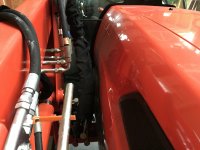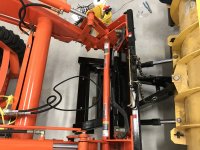chim
Elite Member
There's nothing I'd do differently. It works very well. There was a leaning curve with regard to the height of the loader arms and the amount of curl/dump for keeping the blade floating and flat on the ground. Most of that was accomplished with adding a pair of magnets with Tyrap whiskers for reference. One is for the level indicator rod and another for loader arm height. Simple matter of getting on a level surface and placing the whiskers.
The rear tires are filled, but I added a 50 gallon drum of concrete this year. I sold the rear blower with the L3200 and don't need a rear blade because I can backdrag with the plow.
The grooved tries do provide extra traction. This is the second tractor I've done. Check post 352 in this thread:
https://www.tractorbynet.com/forums/snow-removal/193438-cutting-groving-siping-r-4-a-66.html
The rear tires are filled, but I added a 50 gallon drum of concrete this year. I sold the rear blower with the L3200 and don't need a rear blade because I can backdrag with the plow.
The grooved tries do provide extra traction. This is the second tractor I've done. Check post 352 in this thread:
https://www.tractorbynet.com/forums/snow-removal/193438-cutting-groving-siping-r-4-a-66.html



